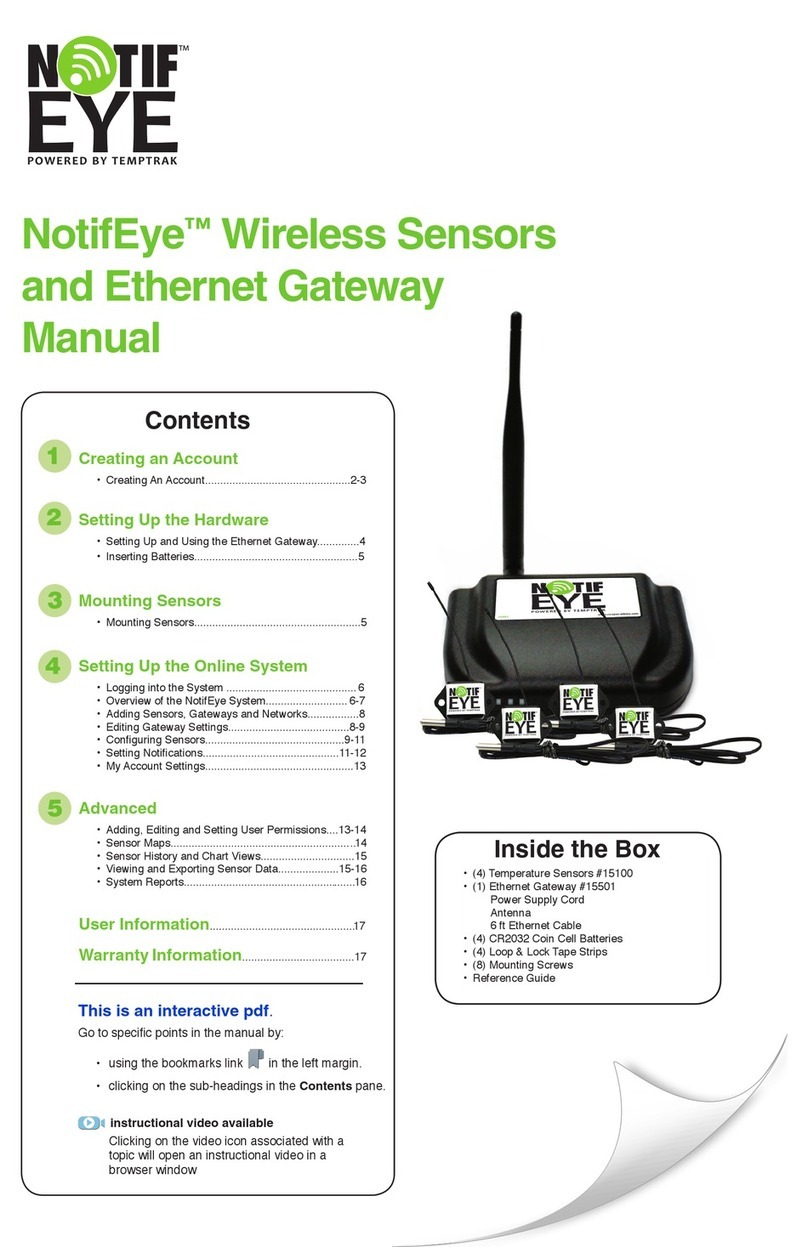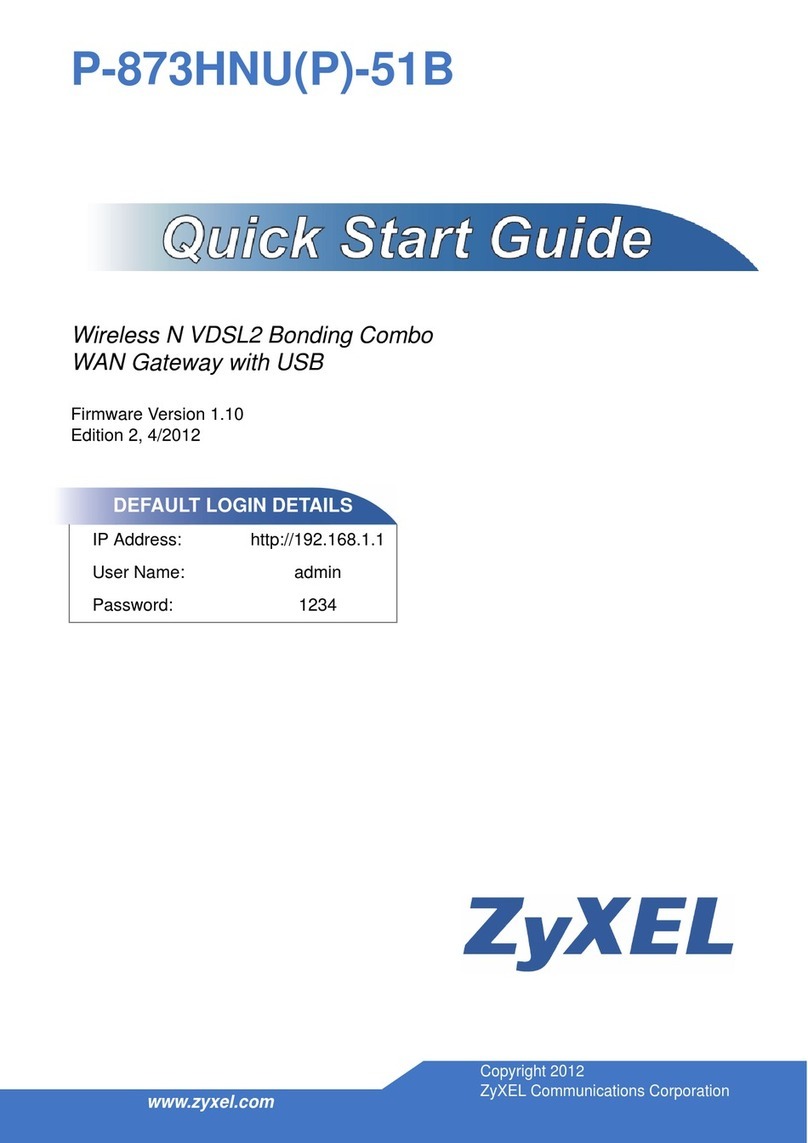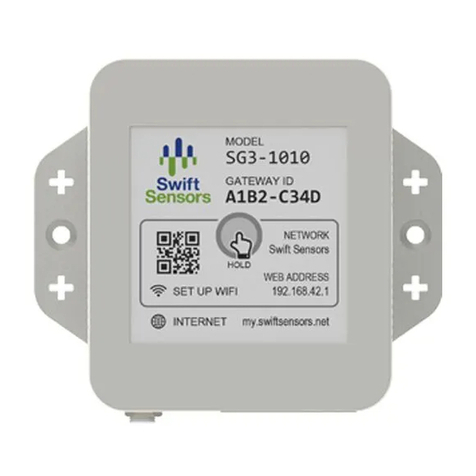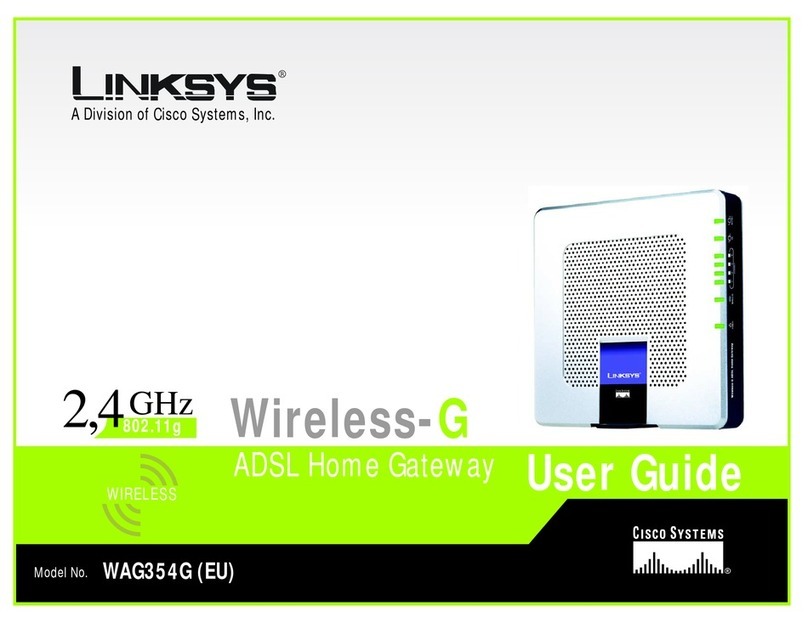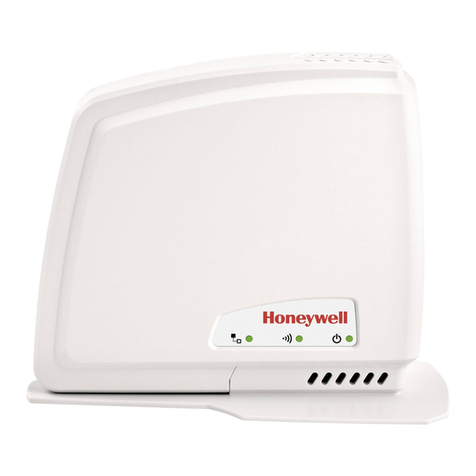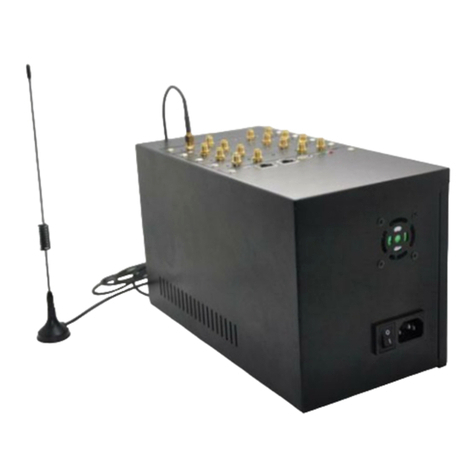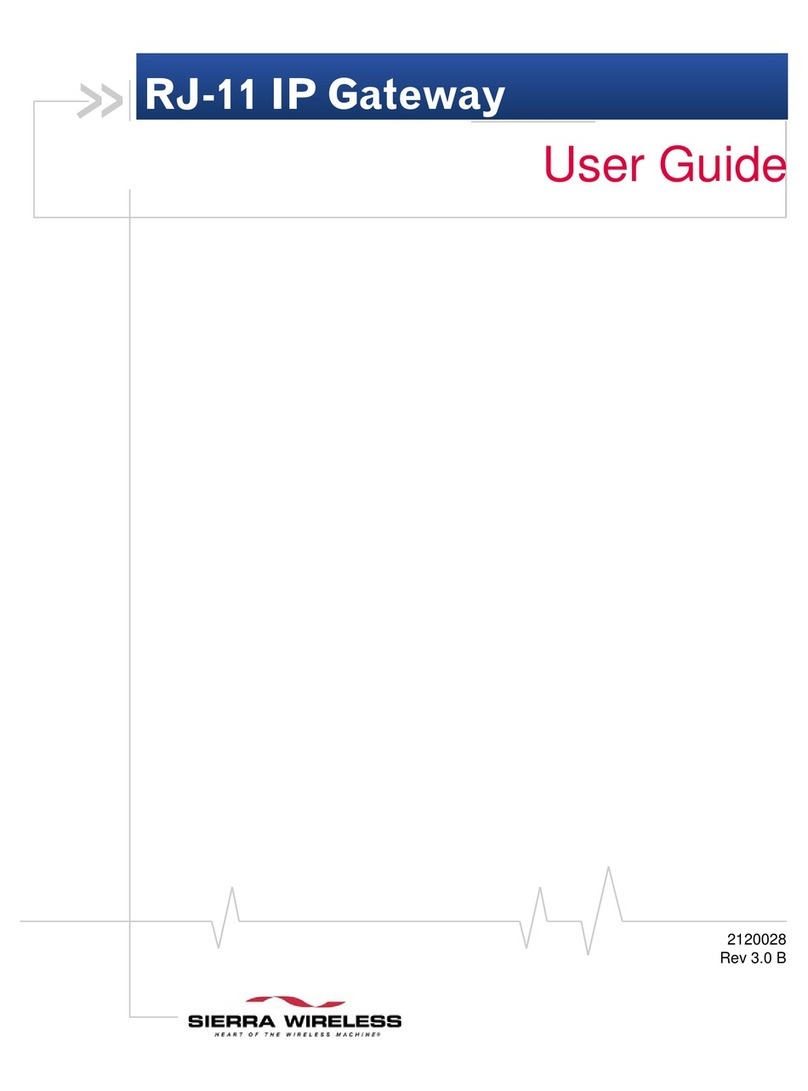NotifEye Wireless Sensors and Ethernet Gateway User manual

N TIF
EYE
POWERED BY TEMPTRAK
TM
NotifEye™Wireless Sensors
and Ethernet Gateway
Manual
Inside the Box
• (4) Temperature Sensors #15100
• (1) Ethernet Gateway #15501
Power Supply Cord
Antenna
6 ft Ethernet Cable
• (4) CR2032 Coin Cell Batteries
• (4) Loop & Lock Tape Strips
• (8) Mounting Screws
• Reference Guide
1
2
3
4
5
Contents
Creating an Account
• Creating An Account..................................................2
Setting Up the Hardware
• Setting up and Using the Ethernet Gateway..............3
• Inserting Batteries......................................................4
Setting Up the Online System
• Logging into the System ........................................... 4
• Adding Sensors, Gateways and Networks..............4-5
• Editing Gateway Settings...........................................5
• Overview of the NotifEye System........................... 6-7
• Conguring Sensors............................................... 7-9
• Setting Notications...............................................9-11
• My Account Settings..................................................11
Mounting Sensors
• Mounting Sensors....................................................12
Advanced
• Adding, Editing and Setting User Permissions... 12-13
• Sensor Maps............................................................14
• Sensor History and Chart Views..........................14-15
• Viewing and Exporting Sensor Data.........................15
• System Reports.........................................................16
User Information................................................17
Warranty Information.....................................17
instructional video available
Clicking on the video icon associated with a
topic will open an instructional video in a
browser window
This is an interactive pdf.
Go to specic points in the manual by:
• using the bookmarks link in the left margin.
• clicking on the sub-headings in the Contents pane.

2Contents Page
Creating An Account
1. In a web browser, navigate to www.notifeyewireless.com
2. Click the “Create New Account” button. Please ensure all elds are completed.
3. Account Information section.
Key Fields:
• Time Zone - All data is recorded using Universal Coordinated Time (UTC) also known as
Greenwich Mean Time (GMT). To select a time zone, locate the city closest to you within your
time zone. This can be updated later if needed.
4. Primary Contact Information section.
Key Fields:
• User Name - this is automatically generated during the initial setup. It consists of the rst and
last name that is entered into the name elds separated by a period. This username will be set
as an administrator.
• Cell Phone and Cell Carrier - these are optional. Enter information if you would like to receive
text messages (SMS Notications).
• Password - must be at least 8 characters
Note: We recommend writing down your username and password on the reference guide that shipped with your kit
and keeping it in a secure location.
5. Sensor Network section.
Key Fields:
• Network Name - enter a name for your rst network (e.g., Main Kitchen).
• Gateway ID - numerical serial number located on the bottom of your gateway.
• Security Code - 6-digit code on gateway label, next to the serial number.
Note: Additional sensors, gateways and networks can be added to your account (see page 6).
6. Once all information has been entered, click the “Create Account” button.
Once you have successfully created an account, you will get a “congratulations” screen. Click on the
“Logon Now” button at the bottom of the screen to return to the NotifEye homepage.
At this point, we recommend you set up your hardware.
1

3
Contents Page
Setting Up the Hardware
Setting Up and Using the Ethernet Gateway
• Connect the antenna.
• Plug the Ethernet cable with internet connectivity into the gateway.
• Plug the power supply cord into a power outlet then connect the plug into the gateway.
• Once all three lights turn green, your network is ready to bring sensors online.
Understanding the Ethernet Gateway Lights
Light 1: Indicates the Ethernet cable is plugged in. A green light indicates ready and working, a red
light indicates there is a problem (e.g., no internet access is available or the Ethernet cable may not
be connected or may be damaged).
Light 2:Indicates the Ethernet has internet connectivity and can reach the online monitoring system.
A green light indicates network trafc to the internet ready and working, a red light indicates there is a
problem (e.g., the gateway cannot connect to the server or the conguration settings are incorrect).
A ashing green light indicates network trafc to the internet.
Light 3: Indicates sensor network activity. A green light indicates ready and working, a red light
indicates there is a problem. A ashing green light indicates radio trafc from the sensors.
Ethernet Gateway Help
If your lights continue to ash red, try unplugging the power and resetting the gateway (see below).
Please watch the video above, If red lights continue to display contact technical support at:
Ethernet Gateway Controls
Using the Control Button (press using a pen or paperclip)
a) Press for 1-2 seconds to trigger the gateway to send all stored sensor messages immediately to
the online system and download any pending system messages to deliver to the sensors. The default
heartbeat for the Ethernet gateway is 5 minutes.
b) Press and hold for 10 seconds to reset the gateway to factory settings. This resets both the
gateway and online heartbeats to 5 minutes. You will need to login to the online system after resetting
the gateway to recongure the gateway to your desired settings.
Configuring The Ethernet Gateway
The Ethernet Gateway collects data from all sensors within range assigned to the same network and
is precongured to batch deliver the sensor messages to the online system every 5 minutes.
If the internet connection is interrupted, the gateway’s internal buffer can store up to 65,000 readings
to prevent data loss. Once the internet connection is re-established, any stored data is automatically
transmitted. Since the gateway requires power for this operation, a battery back up is recommended
in the event of a power outage.
2
Front of Ethernet Gateway
1 2 3
RP SMA Antenna ConnectorEthernet PortPower Plug Control Button
Back Panel

4Contents Page
Inserting Batteries
Slide the coin cell battery into the sensor as shown in g.1. Push the battery all the way to the back
using a paper clip. It will power on within 10-20 seconds. Once you have assigned all your sensors to
a network in the online system, they are ready to be mounted.
Warning: Your sensors ship with a 10-minute heartbeat. It is recommended that
you set the heartbeat to no faster than two hours to extend battery life (see page
8, “Conguring Sensors”). Under normal operating conditions, a sensor set at a
2-hour heartbeat will last for 3000 transmissions.
When changing a sensor’s heartbeat, the new conguration information will be
sent to the sensor on the next heartbeat.
Note: If the sensor status indicator (page 6) does not change, reset the sensor by
removing the battery. Wait 60 seconds then re-insert the battery. When inserting the battery, make sure to push the
battery all the way back using a paper clip.
Manual Sensor Reset Process:
If you want to update the sensors immediately, you can reset them manually by doing the following.
a) Using the end of a paper clip, push the batteries out of the sensors through the small hole in the
top of the sensor.
b) Wait 60 seconds.
c) Re-insert the batteries into the sensors.
Important: Do not mount sensors before entering their IDs and codes into the online system (see page 5).
Setting Up The Online System
Logging into the System
On the home page, enter your username and password you just
created (page 2, 4.) in the login elds and click the “Login” button.
Adding Sensors, Gateways and Networks
These steps will allow you to add sensors, gateways and networks to your
account. If you have additional gateways you can either set them up as their own individual networks
or add them to your existing network and manage them from one account.
1. Adding Sensors.
• Choose the “Manage” tab from the main navigation bar.
• From Network Settings in the left navigation, select the network to which you would like to add
the sensor.
• In the section “Sensor List / Assign Sensor”, enter the Sensor ID and Security Code from the
label on the bottom of the sensor.
+
_
Battery
Fig. 1
3
Clear Data

5
Contents Page
• Press the “Assign Sensor” button. The sensor will now appear in the sensor list.
• Repeat this process to add more sensors to this network.
Note: Sensors contain initial factory data that should be cleared before collecting new data. To do this, click the
“Clear Data” link.
2. Adding Additional Gateways.
• Choose the “Manage” tab from the main navigation bar.
• From the “Network Settings” pane on the left, select the network you would like to add the
gateway to.
• In the section “Gateway List / Assign Gateway”, enter the Gateway ID and Security Code from
label of the gateway you want to add.
• Press the “Assign Gateway” button. The gateway will now appear in the gateway list.
Editing Gateway Settings
It is recommended you leave these at their default settings. If you need to edit these settings, click on
the “Overview” tab and from the Gateway List pane, and click the “Edit” icon next to the gateway.
The ethernet gateway uses Dynamic Host Conguration Protocol (DHCP) to automatically acquire a
network address from the Local Area Network (LAN). We recommend that the “Use DHCP” box be left
checked. In the event that it needs to have an address manually assigned to it, you can assign an IP
address as well as a gateway mask and default DNS through the online interface.
Note: This advanced conguration is NOT required in most instances. In the event that it is required, you will need to
initialize it on a network that can reach the online system with the default DHCP settings allowing your conguration
settings to be downloaded to the device.
Reform Network - assures system is operating on the most optimal RF frequency.
Reset Gateway to Factory Defaults - resets gateway to manufacturer defaults. This will only work if
the gateway is connecting with the system.
3. Creating Additional Networks.
• Choose the “Manage” tab from the main navigation bar.
• From the “Network Settings” pane on the left, click the “Add Network” link and a new network
will appear in the list. To change the default name of this network, (e.g., Network 3355) in the
“Network Details” pane, click the “Edit Network Details” icon .
• Enter a new name and then click “Save” and the network will appear in the settings list.
There are two checkboxes in this section:
Holding Network - leave unchecked for normal system operation. Check the box if you wish to set up
a gateway, sensors and a network but you do not wish to actively collect data from
live sensors.
Send notications for this Network - if checked, any set notications will be sent (see page 9).
• Under “Gateway List / Assign Gateway”, enter the Gateway ID and Security Code from the
gateway you want to add, then press “Assign Gateway”. The gateway will now appear in the
gateway list.

6Contents Page
Overview of the NotifEye System
The Online Interface
When you have logged in to the online system, click on the “Overview” tab. This is the default view.
1. Main Navigation
Overview - click to return to “Home” view. This shows all the sensors and gateways.
Mouse over and click to select a particular network from the dropdown menu.
Notications - click to view Notications.
Manage - click to add and delete Networks, Gateways and Sensors.
Reports - click to access system reports (sent notications and access logs) for your account.
Sensor Maps - click to view a visual map of your active sensors. (Upload an image le and then
visually place your active sensors onto it).
2. At a Glance
Displays the most current readings for every sensor in the selected network, all on one easy-to-read page.
3. Sensor List
Displays all sensors that are currently assigned to your sensor network. Clicking on the sensor names
allows you to view information for that specic sensor. Clicking the edit button by a sensor’s name
allows you to change the sensor specic settings such as sensor name and heartbeat.
4. Sensor Status Indicators and Icons
Displays the status for each individual sensor.
Sensor is checking in and within user dened safe parameters
Sensor has met or exceeded temperature limits or triggered a notication
Sensor has not checked in
No sensor readings since shipping
No sensor readings will be recorded (Inactive)
Edit your sensor
Edit your sensor, however some elds are unavailable until pending transactions have been received by
the sensor at its next scheduled heartbeat or has been manually reset. Once the transaction is complete,
the icon will change back to its normal form.
5. My Account
Click to display and edit account information. Click on a sensor name in the “Sensor List”, the right
panel will change to this view.
6. List Options
Filters sensors listed in the At a Glance pane to show only the sensors that are active, out of range, etc.
4. Sensor Status Indicators
1. Main Navigation
2. At a Glance
3. Sensor List
5. My Account
6.List Options

7
Contents Page
7. Current Sensor Information
Displays the most current information of the selected sensor, including: last check-in, signal strength,
battery power and last sensor reading.
8. Sensor Data Window
Select a tab to change between:
History - displays a history (in list form) of the sensor’s data.
Notications - allows you to view, add, edit or delete notications for the sensor.
Chart - displays a graphical view of the sensor’s data.
Export - allows you to archive data by exporting as a .csv le.
Edit - allows you to change congurations such as sensor name and heartbeat.
Note: The tab highlighted in green is your current selection.
9. Date Range Selector
Allows you to choose the date range for viewable information such as sensor history, notications
sent, charts and sensor data export.
Configuring Sensors
To set a sensor’s congurations, from the Sensor List, click the “Edit” icon next to the name of
the sensor that you would like to congure. Alternately you can click on the “Edit” tab in the Sensor
Data Window to access this same area. The Temperature Sensor Conguration window allows you
to set the primary congurations for each sensor. Within this window you can change the name of
the sensor, set the heartbeat (how often the sensor checks-in with the software - 120 minutes is
recommended), and change the unit of measurement. When you have nished making changes,
press the “Save” button at the bottom of this section.
Note: Be sure to click the “Save” button anytime you make a change to any of the sensor parameters. All changes made
to the sensor settings will be downloaded to the sensor on the next sensor heartbeat (check-in). Once a change
has been made and “Saved,” you will not be able to edit that sensor’s congurations again until the sensor has
downloaded the new setting.
Sensor Name
The name of the assigned sensor, e.g., Freezer 1.
Display As
Indicates whether temperature is displayed as °F or °C. Slide the grey bar to change between them.
8. Sensor Data Window
7. Current Sensor Information 9. Date Range Selector

8Contents Page
Heartbeat Interval
How often the sensor transmits to the online system via the gateway. It is recommended to set the
Heartbeat Interval to 120 minutes (2 hours) to preserve battery life.
Heartbeat Interval Battery Life
30 mins Up to 6 months
60 mins Up to 1 year
120 mins Up to 3 years
Assessments per Heartbeat
How many times between heartbeats a sensor will compare its readings against the measurement
limits. An average of assessment readings is transmitted on the heartbeat.
Aware State Heartbeat
If outside of measurement limit during assessment/reading puts the sensor into “High Alert” or Aware
State. Now assessment frequency is determined by the Aware State Heartbeat.
A Notication Alert will not automatically happen unless parameters are set-up in the Notications
window.
Sensor is On
The time of day the sensor is actively working. No communication will be sent while sensor is
hibernating. If you select “Between”, you will need to indicate the time-frame the sensor should be on.
This is useful to monitor conditions only during daytime or nightime hours.
Use Aware State (also known as Threshold)
Any assessments below the minimum value or above the maximum value will cause the sensor to
enter an Aware State. Minimum (left slider) any assessments below this will cause sensor to go into
Aware State. Maximum (right slider) any assessments above this will cause the sensor to enter Aware
State.
If you have a question about any elds
in this window, mouse over the next
to the right of the eld and it will
give you a brief denition
You can also type in the numbers as
well as using the sliders to
change them
Below: 32 ° or Above: 41 °
Use Aware State
Sensor is operating
within limits
Sensor is operating
outside limits
(enters Aware State)
?

9
Contents Page
Threshold Buffer
A buffer to prevent the sensor from bouncing between standard operation and the aware state when
the assessments are very close to a threshold. E.g., if a minimum value is set to 32°, a maximum
value is set for 41° and the buffer is set to 1°, when a sensor takes an assessment below 32° or
above 41° it enters and remains in the Aware State until the temperature reading returns to within 1°
of the preset limits (i.e., 33° and 40° respectively).
Synchronize
In large sensor networks, offset is used to prevent all sensors from transmitting simultaneously thus
reducing communication disruption.
Failed Transmissions
The number of transmissions the sensor sends without response from a gateway before entering
battery-saving link mode. In link mode the sensor will scan for another gateway on the same network
and use that to send information. If none are found, the sensor will sleep for 2 hours before trying to
scan again.
Configuring Multiple Sensors Simultaneously
Once you’ve set the conguration for one sensor, you can then congure multiple sensors
simultaneously with the same settings.One sensor must already be congured to use this feature.
Click on the “Overview” tab in the main navigation bar. You can make certain congurations to
multiple sensors by clicking on “Congure Multiple Sensors” at the bottom of the Sensor List Window.
In the “Congure Multiple Sensors” pane, you can choose which sensor to use for the desired
conguration. Click the “Check All” or “Uncheck All” button to select which sensors will be updated
with the sensor conguration you identied above.
Note: Settings congured through this window will overwrite any custom settings currently set for the selected sensors.
Setting Notifications
Automated notications can be set up to alert you via SMS text or email if a wireless sensor meets a
set threshold or condition. To create a new notication or edit/delete an existing notication, click on
the “Notications” link in the main menu area of the site.
1. The Notification List Window
?
Threshold Buffer
1 °
Below: 32 ° or Above: 41 °
33° 40°
Enable / Disable
a Notication
Edit an Existing
Notication
View / Edit / Delete
Notication
Create a New
Notication
Notications
Tab

10 Contents Page
2. Creating a New Notification
Click on the “Create New Notication” link or click on the “+” sign.
Title
Allows you to name your notication, e.g., Fridge#1 Temperature Alert
Class of Notification
There are four notication options available when creating a new notication.
• Application: Application notications are sensor specic (temp sensor = trigger alert when temp is above
70°F, etc.). If creating an application specic notication, you will need to choose what sensor type you are
creating the alert for either temperature or humidity. The system will automatically populate a list of sensor
types that are currently being used within the network. The noticatiion you create will be based on the
selected sensor type.
• Inactivity: Set up “Inactivity” notications to alert you when your sensors and/or gateways have stopped
communicating with the servers. Failure to set up an “Inactivity” notication will result in no email/SMS text
being sent should your sensors stop communicating with the servers. This can also be used for inactivity in
the gateway.
• Low battery: Allows users to dene a battery power percentage level that will trigger an alert from the
system, warning them to replace batteries.
• Advanced: Allows the user to set notications based on more advanced rules; such as comparing past data
points with the current one to determine if the notication should be sent.
NotifEye after Aware period: Sends a notication any time a sensor exceeds set measurement limits and
enters an aware state.
Back Online: Sends a notication when a connection is restored.
Battery below 10 (%): Sends a notication when a battery drain reaches 10% battery life.
When you are nished, click the “Create” button.
3. Setting and Editing Notification Settings
People that will receive this notification
For each person that you want to receive notications, start typing a name into the box and the
system will automatically populate the name of a user within your sensor network. If there are already
multiple users on the network, a dropdown list of names will appear. Select the name of the user for
Select the class of
notication

11
Contents Page
the notication. You will also need to select how the notication will be sent (email/SMS text or both).
If the person to be notied does not have an account on the network, you may quickly add them by
selecting the “New System User” link and entering their contact information.
Notification Parameters
Title
Name of Notication
Notification Text
Message that will be displayed when notication is sent.
Notify when sensor temperature reading is
This area allows you to set notication parameters such as the name, the notication message and
sensor data conditions that will trigger the notication.
Alert Between
Species hours that the notication is on
Don’t Alert again for (snooze)
Denes how frequently you want to be notied once the alert is active.
Notification is Active
Allows you to turn off a notication temporarily without deleting it.
Assigned Devices
Allows you to tell the system which sensors will trigger the notication being created. When a
notication is sent from the system, it will automatically include the sensor name and data that caused
the notication to be sent.
4. Deleting a Notification
To delete a notication, in the “Notication List” pane, click on the name of the notication you wish to
edit and at the bottom of the pane, click on the “x” or delete button to remove the notication.
Note: Clicking on the edit icon will only allow you to edit the notication, but does not allow you to delete it. Click on
the name of the notication to delete it.
My Account Settings
Clicking on the “My Account” link in the top right of the screen will open the Settings pane where you
have access to change account information and setup account users.
Account Information
Information that can be edited include: company name, primary contact, time zone and address. It will
also tell you the date that your account needs reviewing.
To edit your Account Information click on the “Edit” icon and press “Save” when completed.

12 Contents Page
Mounting Sensors
Sensors should be placed on a clean, dry, at surface. Place them at least 3 ft away from each other
and any wireless gateway for clearest transmissions.
Do not place the sensor body inside any refrigerator/freezer cabinet or storage area since this will interfere
with sensor performance.
Sensors can be mounted in a variety of ways including using the screws or loop & lock tape that
comes in your NotifEye kit. To use the loop & lock tape, peel off the sticky back and afx to the back
of the sensor. Peel the other sticky side off and press the adhesive to the desired location. Next,
secure probe inside the cabinet with moisture-resistant tape, cable-ties or other suitable method.
Advanced
Adding, Editing and Setting User Permissions
Adding New Users
To add new users, click on the “My Account” button at the top right hand of the screen. From the
“My Account” page, select Account Users from the left panel
Note In order to make changes to users, you’ll need to have administration privileges to the account.
4
Fig. A - temperature sensor mounted to the outside of a walk-in refrigerator, showing the probe wire
routed through the door gasket.
Fig. B - temperature sensor mounted to the outside of a walk-in refrigerator, showing the probe wire
routed through a panel meter.
Fig. C - temperature sensor mounted to the outside of a reach-in refrigerator, showing the probe wire
routed through the door gasket.
Fig. A Fig. B Fig. C
5
Add New User
Delete
Users
Edit
User

13
Contents Page
Click the “+” sign or select “Add New User” and ll in their corresponding information. You will need to
assign them a username and password. If you want this user to receive cell phone or text alerts from
the system, you’ll need to enter their cell phone number and cell carrier from the dropdown.
If you are creating another administrator, who will have permission to edit information, you’ll need to
make sure to check the “Full Permissions” box. If this user is only to have specic permissions, you’ll
need to go back and make these changes once the user has been added to the account. Once you
select “create”, you will be taken back to the Account settings page. If you click on “Account Users”,
your new user will be displayed.
Editing Existing Users
To make edits to a user, in the “Account Users” list, locate the user and click on the pencil icon
next to their name. From here you can reset their password, edit their personal contact information
and edit their permissions. If you want to make the user an admin, checking “Is Administrator” will give
them full administrative access to view and make changes to the account.
Setting User Permissions
If this user is to have limited permissions, you’ll need to make these changes once the user is added
to the account. To make changes to an exisiting account users permissions, click on the “Edit Permissions”
link at the bottom.
You can choose which networks each user can see and whether they are allowed to make any
changes to network & sensor settings by checking and unchecking the boxes next to each one
After making changes, select save, and then save again.
Full
Permissions
checkbox
Edit
Permissions

14 Contents Page
Sensor Maps
The rst time the Sensor Map tab is selected you will be prompted to choose and upload an image of
your facility from your own les. Your sensors can be superimposed onto this image to represent their
physical location in the facility.
Clicking and dragging with the mouse allows you to view different portions of the map. To place a
sensor on the map, under the Sensor List, click the “Add to Map” link next to the chosen sensor, or
click and drag the sensor image to its desired location. Mousing over any sensors that are on the
map will display the last reading while clicking a sensor will display the sensor information window.
To zoom in and out of the map, click on the “+” and “-” buttons in the bottom right of the image map.
Remove a sensor by right-clicking on the sensor and select “Remove From map”. To add additional
maps, in the Sensor maps pane, click “New” link.
Note: All your available sensors will be listed in the left, Sensor List pane. To only view sensors in a particular
network, select the network from the dropdown box.
Sensor History and Chart Views
Select the “Overview” tab in the main navigation bar. Click on a sensor name from the list in the left
pane to bring up the sensor navigation tabs. Clicking on the “History” or “Chart” tabs within the sensor
data window allows you to view the sensor data history as text or in a graphical chart for the date
range specied in the top right corner. To change the date range of the viewable information, click on
the date range box at the top right of the sensor data window.
Note: If you view data immediately after setting up your system, the chart will not have enough readings to create a
graph; you must wait until your sensor has checked in multiple times.
Load Data Snapshot gives an
overview of the last readings for
all sensors shown on map.

15
Contents Page
Note: The tab highlighted in green is your current selection.
Zoom
Zoom allows you to view a particular portion of the top graph. When you click and drag with your
mouse between two points on the graph, a magnied view will appear in the top graph area. Click
“Reset Zoom” to restore to the default view.
Viewing and Exporting Sensor Data
Exporting to .csv file
Clicking on the “Export” tab within the sensor data window allows you to export sensor data to a
comma separated value (.csv) le or send the sensor data to an external web source. To export
sensor data you must rst select the date range for the data you want to export. Once the date range
is selected, determine whether you want sensor data from the selected sensor only, from all sensors
in the network or all sensors assigned to the account.
When you are nished, click on “Export Data” at the bottom of this window. The data will be exported
to a comma separated value (.csv) le for use in spreadsheet software such as Microsoft Excel®.
Depending on your browser settings you may be prompted for a save location. If not, the le will be
downloaded to your browser’s default download directory.
Note: Only the rst 5,000 records within the selected date range can be exported at a time.
Clicking and dragging between
two points on the graph will
select the zoom area. This area
will be shown in the top graph.

16 Contents Page
Exporting Data to a 3rd Party
You can alternately send your sensors’ incoming data to a 3rd party by clicking on the “Congure
data push” link at the bottom of the window. From this area you can pass data from your wireless
sensor network devices to another service in real time. This is done by coding the data into a url
query then sending the data via http get request at the time data is received. There is an extensive
list of parameters that can be passed, as listed in the viewed window, that allow you to send detailed
information about both the data and the sensor.
Note: We do not recommend using or changing these settings without consulting with an IT professional.
System Reports
The NotifEye system’s “Report” tab allows you to view two types of reports: Sent Notications and an
Access Log. To create these reports, click on the “Reports Tab” in the top navigation bar.
To view sent notications, simply click on Sent Notications from the left panel and enter the preferred
date range (default range is one week). Once you hit submit, it will show all notications sent regarding
your wireless system. If you choose the Access Log for a specied timeframe, you will see an access
log showing all users that have logged in to the account, and the date & time they logged in.

17
Contents Page
User Information
For detailed instructional videos on how to use your NotifEye™ Wireless Sensors or the NotifEye™
Online System, please visit us at: www.cooper-atkins.com/notifeye/support
This equipment has been tested and found to comply with the limits for a Class B digital devices, pursuant to Part
15 of the FCC Rules. These limits are designed to provide reasonable protection against harmful interference in a
residential installation. This equipment generates, uses, and can radiate radio frequency energy and, if not installed
and used in accordance with the instruction manual, may cause harmful interference to radio communications.
However, there is no guarantee that interference will not occur in a particular installation. If this equipment does
cause harmful interference to radio or television reception, which can be determined by turning the equipment off
and on, the user is encouraged to try to correct the interference by one of more of the following measures:
• Reorient or relocate the receiving antenna
• Increase the separation between the equipment and receiver
• Connect the equipment into an outlet on a circuit different from that to which the receiver is connected.
• Consult the dealer or an experienced radio/TV technician for help.
WARNING
Changes or modications not expressly approved by Cooper-Atkins could void the user’s authority to operate the equipment.
RF EXPOSURE WARNING
To satisfy FCC RF exposure requirements for mobile transmitting devices, a separation distance of 20 cm or more should be
maintained between the antenna of this device and persons during device operation. To ensure compliance, operations at closer than
this distance are not recommended. The antenna used for this transmitter must not be co-located in conjunction with any other antenna
or transmitter.
Limited Warranty
Any instrument which proves to be defective in material or workmanship within one year of original
purchase will be repaired or replaced without charge upon receipt of the unit prepaid with proof of
purchase. This Limited Warranty does not cover damage in shipment or failure caused by tampering,
obvious carelessness, or abuse, and is the purchaser’s sole remedy.
Cooper-Atkins Corporation
33 Reeds Gap Road • Middlefield CT • 06455-0450 U.S.A.
Email: [email protected]
www.cooper-atkins.com
67-1355
V0613
Other manuals for Wireless Sensors and Ethernet Gateway
1
Table of contents
Other NotifEye Gateway manuals
Popular Gateway manuals by other brands
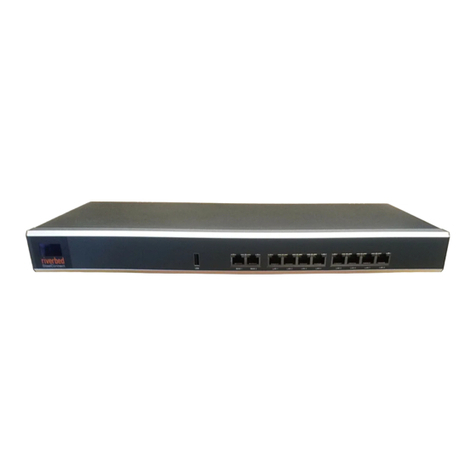
Riverbed
Riverbed SteelConnect SDI-330 quick start guide

Power Inspired
Power Inspired GABY quick start guide

ZyXEL Communications
ZyXEL Communications P-792H quick start guide
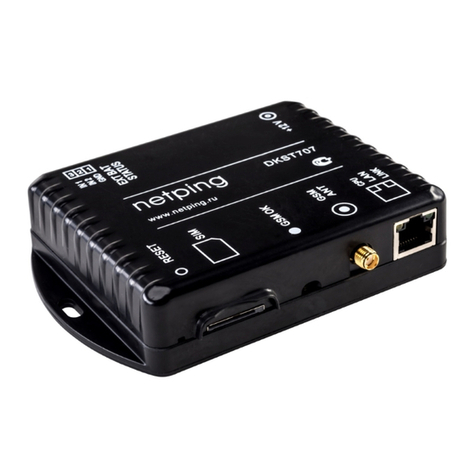
NetPing
NetPing SMS user guide

Alphatech
Alphatech BlueGate SIP Quick installation guide

Leviton
Leviton DRCDD-L0 installation instructions

ZyXEL Communications
ZyXEL Communications AMG1202-T10A quick guide
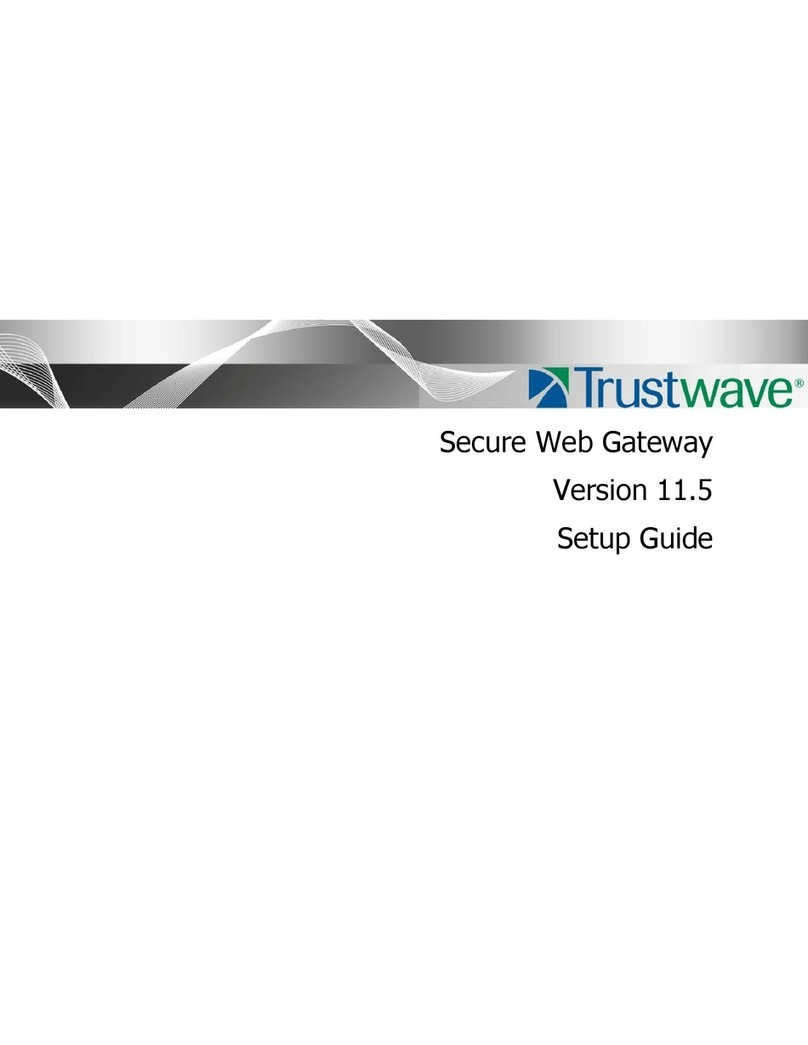
Trustwave
Trustwave SWG 3000 Setup guide
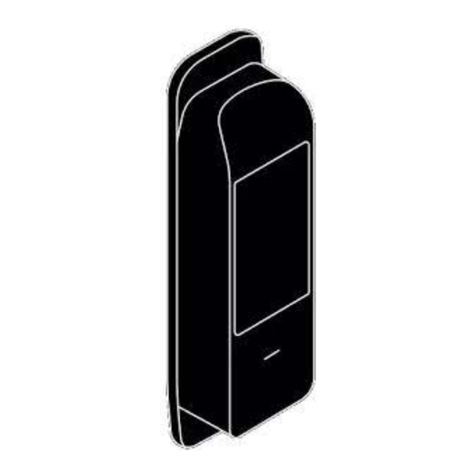
Motive
Motive 55 installation guide
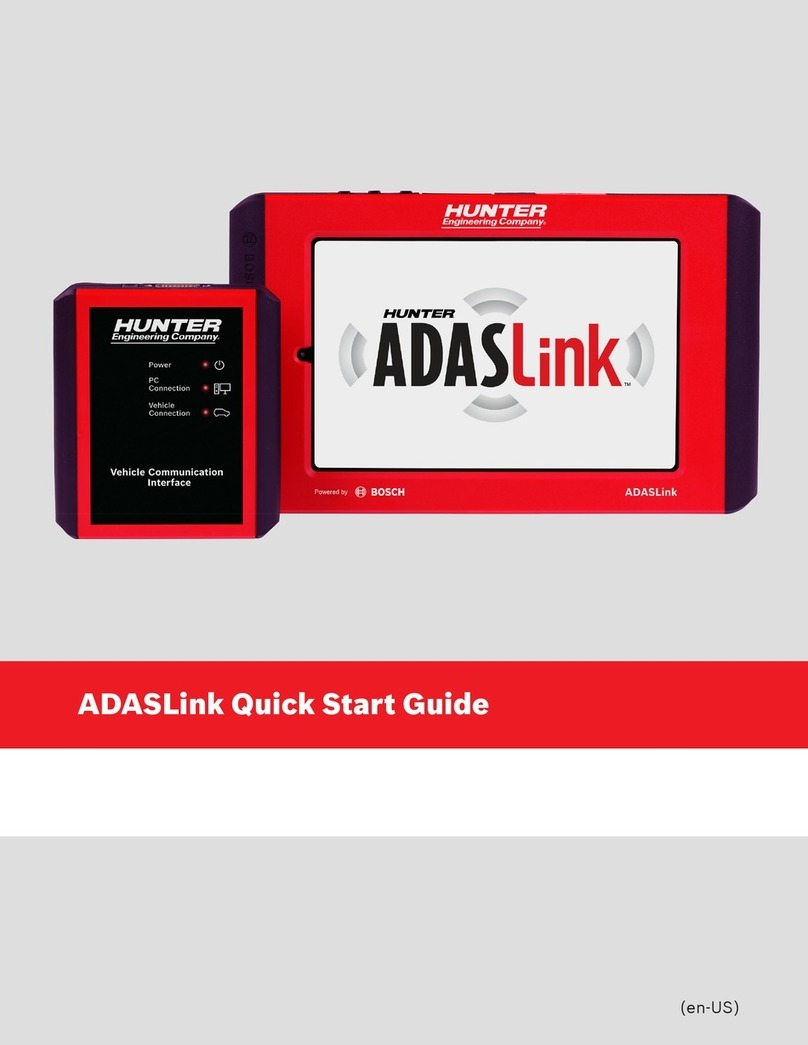
Hunter
Hunter ADASLink quick start guide

DEUTSCHMANN AUTOMATION
DEUTSCHMANN AUTOMATION UNIGATE IC2 - Fast Ethernet instruction manual
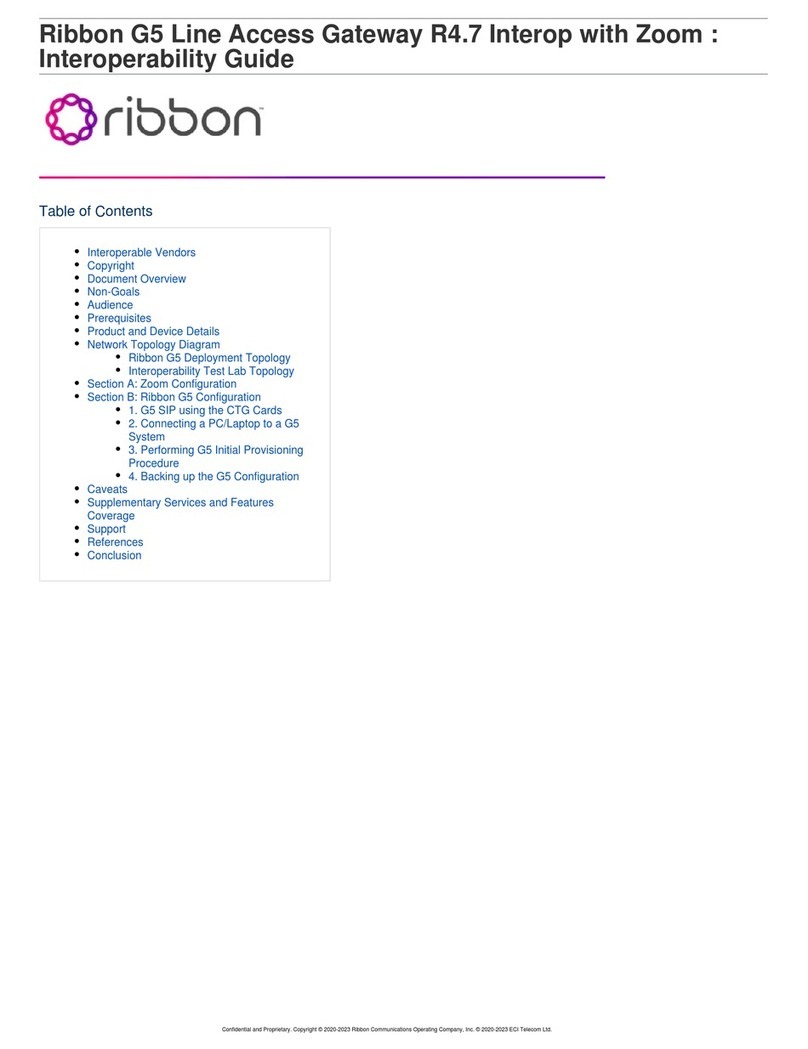
ribbon
ribbon G5 Line Access Gateway R4.7 Interoperability guide
